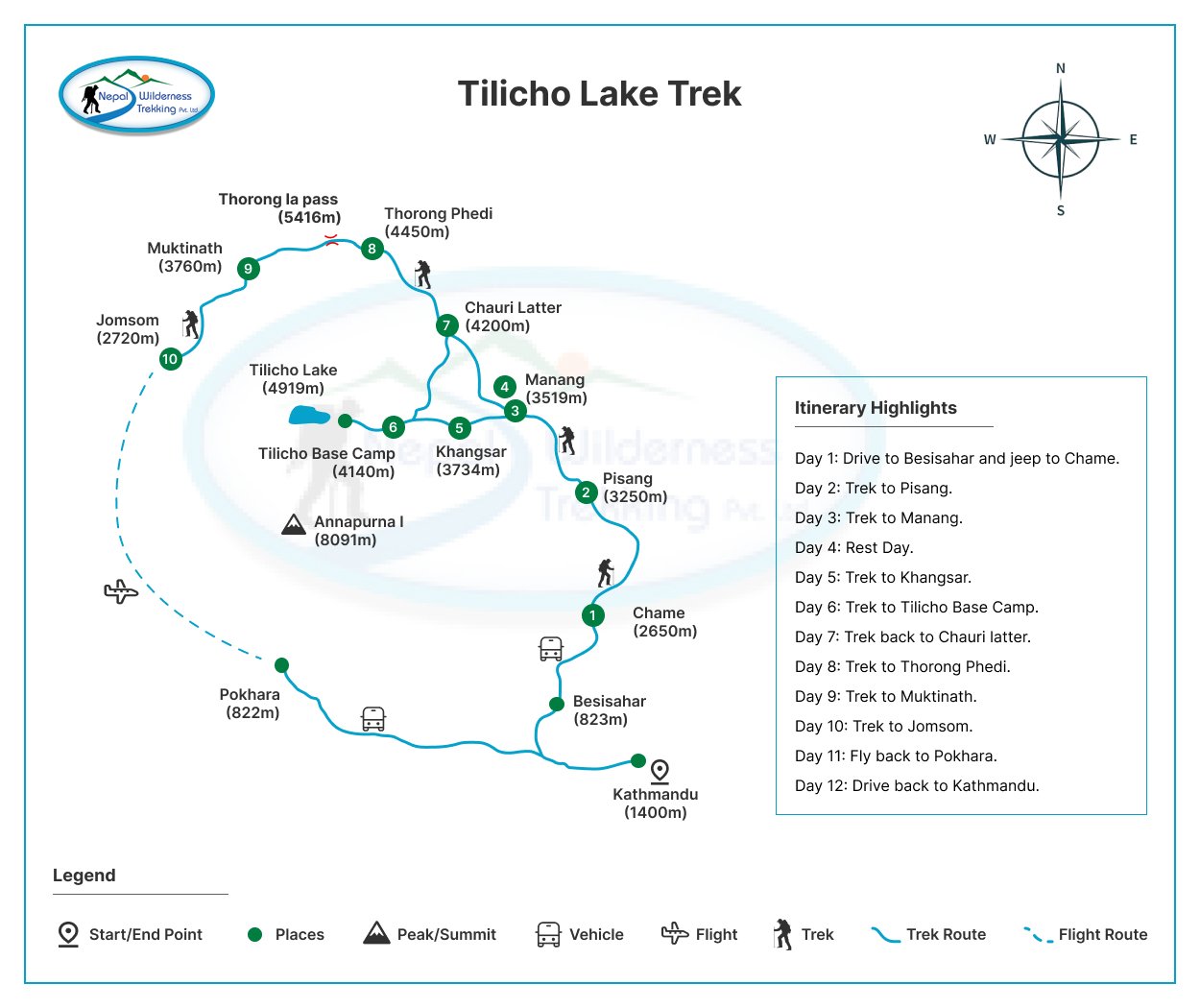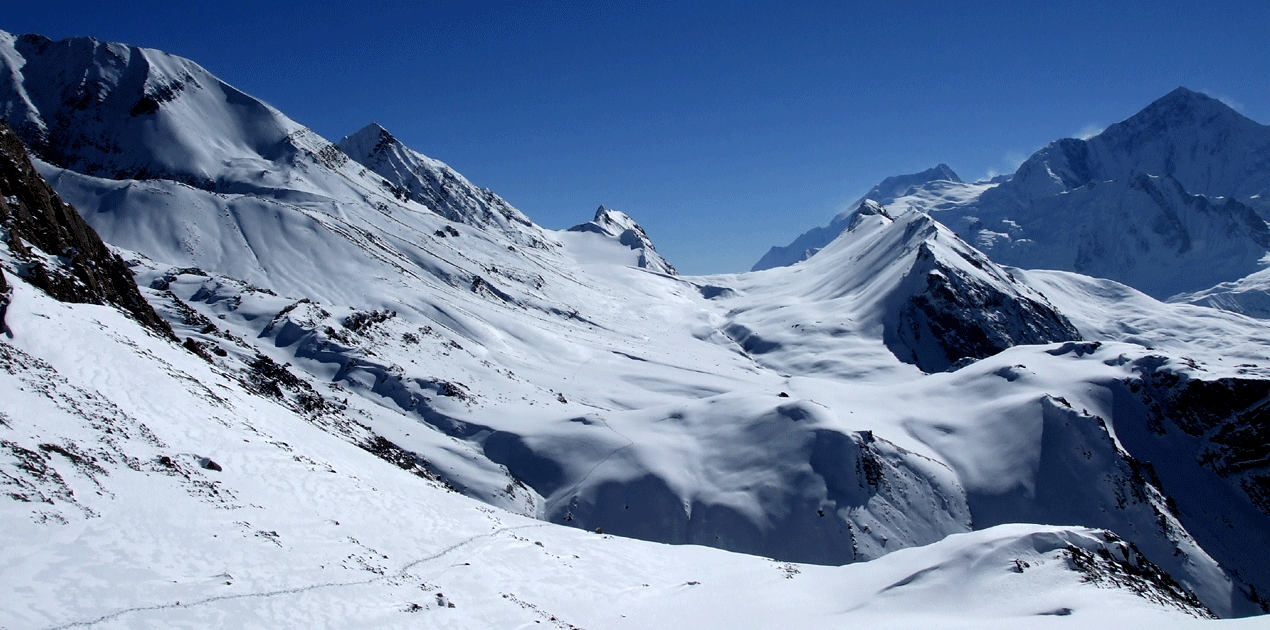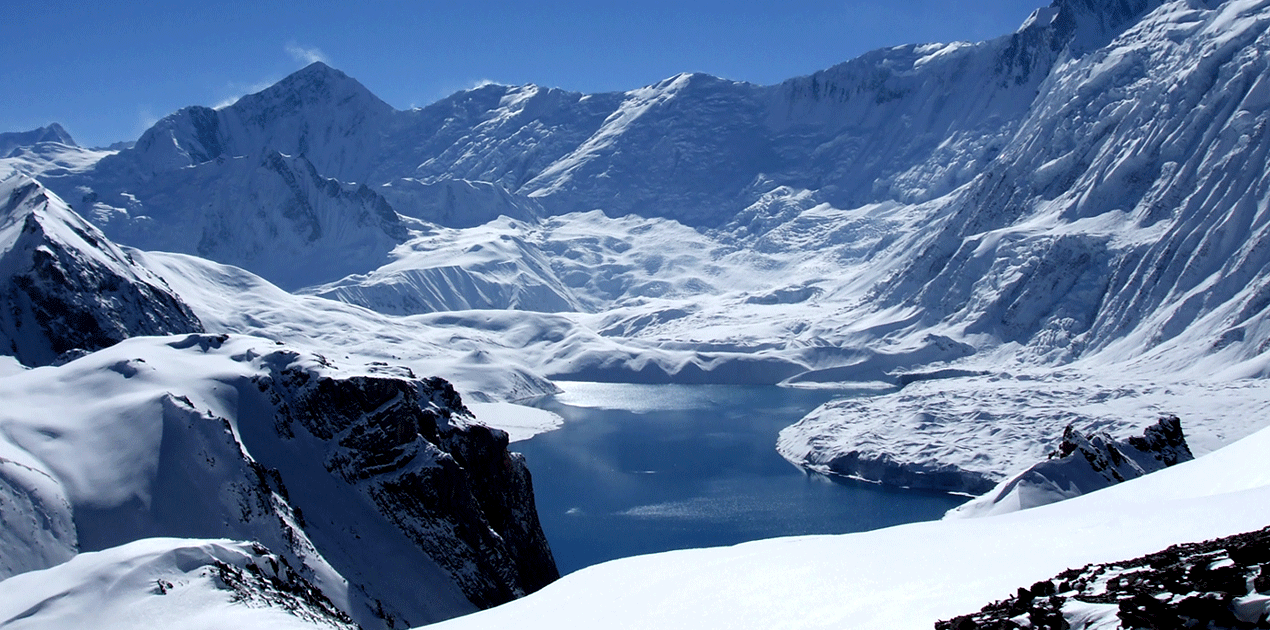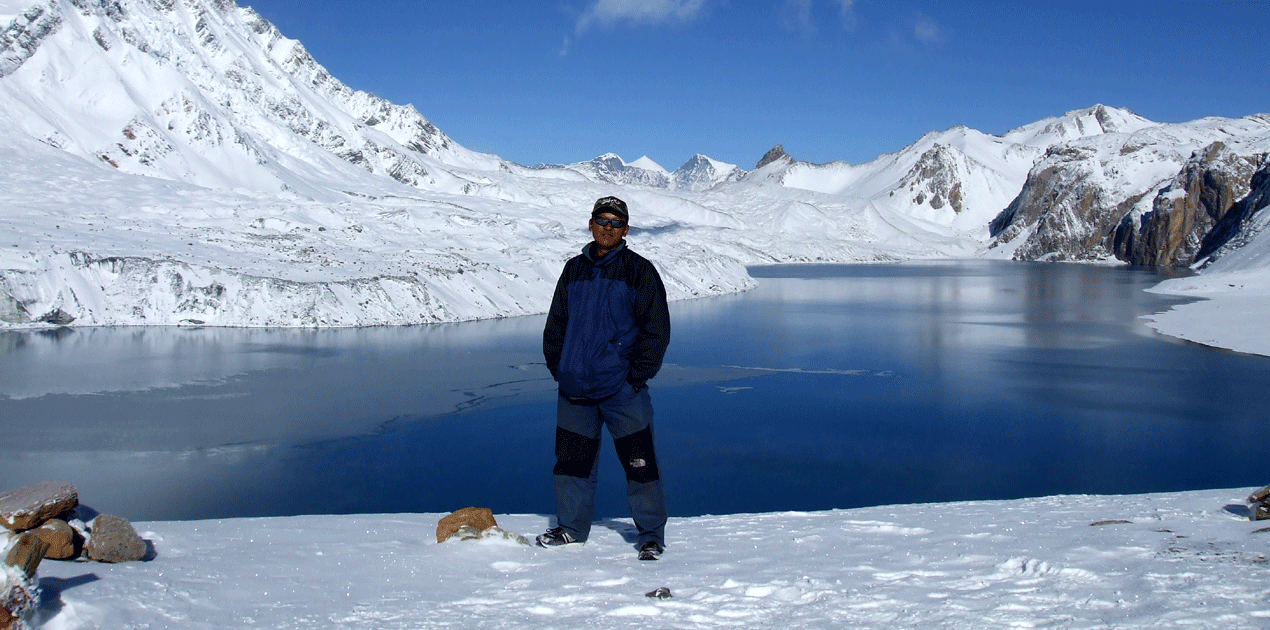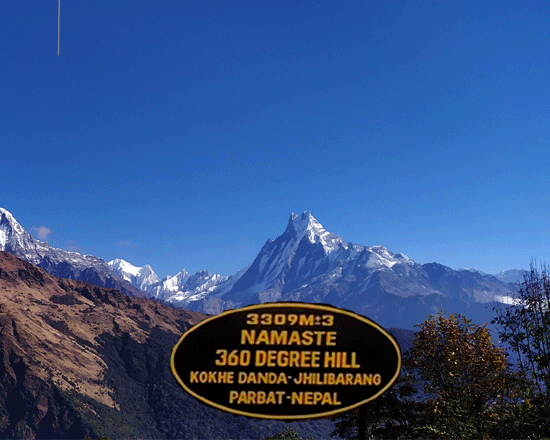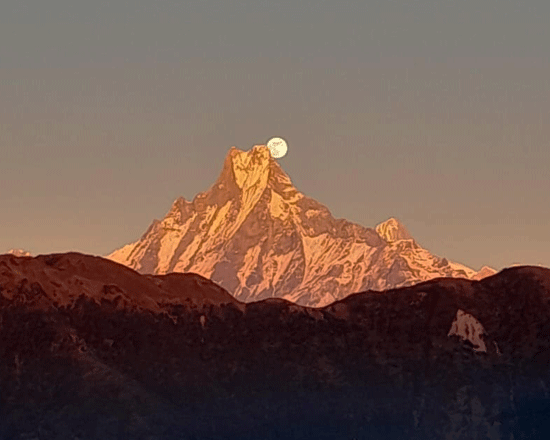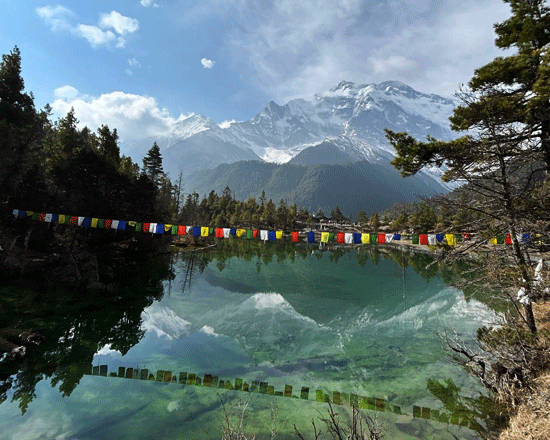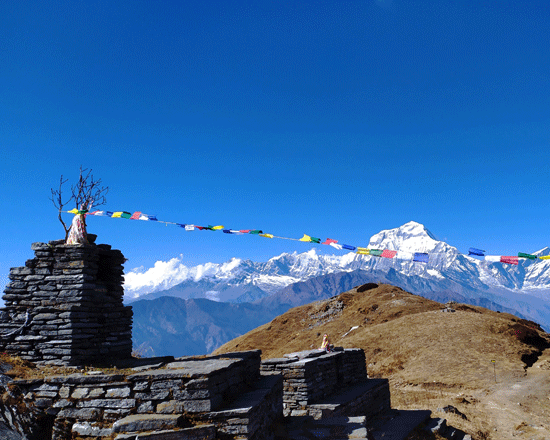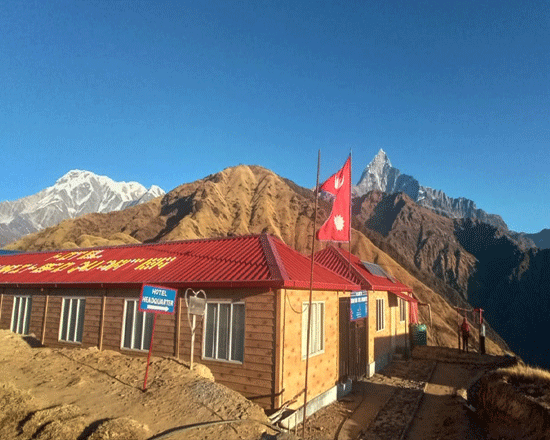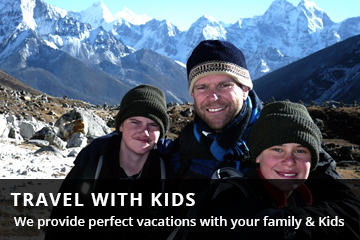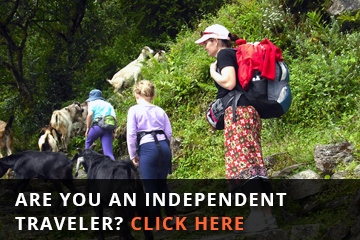Tilicho Lake Trek
Tilicho Lake Trek
Annapurna RegionTrip Facts
Since the terrain can be hard and the days long, hikers on these treks should be in good physical condition and have some previous mountain walking experience. Steep climbing may be involved, although it is never necessary to use ropes. Treks at this level can he arranged for periods of 16 to 21 days. Typically, a gradual ascent through a green river valley will lead you up to a number of high passes, where you will reach the altitude of 5416m. Often times, you will get a close insight into the Tibetan culture. Participants should expect to trek above 5416m/17872ft.
Mode of Travel : Bus,Jeep,Hike100%
Overview
Exploring the Magnificence of Tilicho Lake Trek
Tilicho Lake Trek is situated within the captivating Annapurna region of Nepal and offers breathtaking views of the Annapurna mountain range. Trekkers will witness the grandeur of peaks such as Annapurna I (8,091 meters), Annapurna II (7,937 meters), and Annapurna III (7,555 meters). The pristine Tilicho Lake, at an elevation of approximately 4,919 meters, serves as the trek’s highlight. Surrounded by Tilicho Peak (7,134 meters) and the neighboring Manaslu Ranges, including Manaslu (8,163 meters), this high-altitude trek is a paradise for those who seek the thrill of nature’s wonders.
Trekkers begin their journey in the traditional Manang village, located at an altitude of 3,519 meters. The Tilicho Lake Trek features the glacier-fed waters of Tilicho Lake, adding to the allure of this pristine destination. The journey from Manang to Tilicho Lake covers approximately 24 kilometers and takes about 2 days, presenting trekkers with a challenging yet rewarding experience.
Conquering the Thorong La Pass
The Tilicho Lake Trek includes the formidable Thorong La Pass, which stands at 5,416 meters. This significant point in the Annapurna Circuit requires trekkers to navigate demanding terrain and high altitudes. This part of the trek is crucial in an adventurer’s journey, steeped in rich Nepali tradition. The Tilicho Lake trek presents challenges including altitude sickness, extreme cold, and unpredictable weather, requiring careful navigation along narrow trails.
Venturing Through the Mesokanto La Pass
For those equipped with camping gear and seeking an even more adventurous route, crossing the Mesokanto La pass is an option. This pass, located at an elevation of 5,300 meters, offers an alternative to the more frequented paths. Trekkers who choose this route must be prepared for a more rugged experience, with the need to camp en route. This path joins the Annapurna Circuit trail near Jomsom Bazaar, providing an exhilarating and remote trekking experience.
Spiritual Significance for Pilgrims
The Tilicho Lake Trek holds immense spiritual significance for Hindu and Buddhist pilgrims. It is linked to sage Vyas, the Pandavas from the Mahabharata, and the revered Tibetan master Milarepa. In the month of August, during the full moon, pilgrims flock to Tilicho Lake to perform rituals, offer prayers, and take purifying dips in the icy waters. The route is adorned with ancient monasteries and temples, including the Muktinath Temple at 3,800 meters, adding a profound spiritual dimension to the journey.
Acclimatization and Cultural Immersion
Concluding the Adventure in Jomsom
After crossing the Thorang La pass, the Tilicho Lake Trek culminates in Jomsom’s 2,720-meter altitude. From here, trekkers can choose to fly to Pokhara or take a bus, depending on the weather conditions. For those with additional time, the trek can be extended to visit Tatopani and Ghorepani Poon Hill, at 3,210 meters, allowing for further exploration of the region’s beauty.
Best Seasons for Trekking
The ideal times for undertaking the Tilicho Lake Trek are during the spring (March to June) and autumn (September to December) seasons. In spring, mild temperatures and vibrant wildflowers create a picturesque trekking experience. The weather is typically dry, with minimal chances of rainfall. Autumn brings cool and pleasant temperatures, clear skies, providing perfect trekking conditions. This season follows the monsoon period, leaving the mountains lush and green, enhancing the views of the surrounding landscapes. Winter (January to February) is generally discouraged for trekking due to extreme cold and heavy snowfall, which make the journey challenging and potentially dangerous.
Organized Trekking with the Nepal Wilderness Team
The Nepal Wilderness Trekking team organizes this comprehensive trek, ensuring trekkers have a memorable and safe experience. The team includes a female or Male guide, a first aid kit, necessary equipment, and detailed cost information. This trek blends natural beauty, cultural heritage, and spiritual depth, offering an unparalleled adventure in the heart of the Himalayas.
Unveiling the Pristine Beauty of Tilicho Lake Trek
Tilicho Lake Trek, nestled in the heart of the Annapurna region of Nepal, promises breathtaking views and unparalleled natural beauty. This trek reveals the pristine Tilicho Lake and the grandeur of the Annapurna mountain range, including peaks like Annapurna South (7,219 meters) and Gangapurna (7,455 meters). The trek is a must-visit for nature enthusiasts and adventure seekers alike.
Experience the Serenity of Tilicho Lake
Starting from the traditional Manang village, trekkers embark on a journey that leads them to the glacier-fed waters of Tilicho Lake. Surrounded by towering peaks, the Tilicho lake offers a serene and awe-inspiring destination for trekkers. The journey from Manang to Tilicho Lake covers about 24 kilometers, typically taking 2 days, providing an opportunity to witness the natural beauty and tranquility of this high-altitude Tilicho Lake.
Challenge Yourself with Thorang La Pass
One of the trek’s highlights is crossing the Thorang La pass, a key point in the Annapurna Circuit, the pass stands at 5,416 meters elevation. This challenging section of the pass is steeped in Nepali tradition and is considered essential for completing the circuit. Trekkers face various challenges, including altitude sickness, extreme cold, and unpredictable weather sometimes, along with navigating narrow and demanding trails.
Embrace the Spiritual Journey
The Tilicho Lake Trek is more than just a physical challenge; it is also a spiritual journey. Hindu and Buddhist pilgrims hold the trek in high regard, linking it to sage Vyas, the Pandavas from the Mahabharata, and the Tibetan master Milarepa. Pilgrims gather at Tilicho Lake during the full moon in August to perform rituals, offer prayers, and take dips in the icy waters. The trek includes visits to ancient monasteries and temples, such as the Muktinath Temple, adding a spiritual layer to the adventure.
Cultural Experiences and Acclimatization
Optimal Trekking Seasons
Spring and autumn are the best seasons for the Tilicho Lake Trek. Spring offers mild temperatures and vibrant wildflowers, creating a stunning backdrop for trekking. The weather is generally dry, with minimal rainfall. Autumn brings cool, pleasant temperatures and clear skies, perfect for trekking. This season follows the monsoon, leaving the mountains lush and green. Winter is not recommended due to extreme cold and heavy snowfall.
Trekking with the Nepal Wilderness Team
The Nepal Wilderness Trekking team provides a well-organized trek, ensuring safety and enjoyment. The team includes a female/male guide, a first aid kit, necessary equipment, and cost details. This trek combines natural beauty, cultural experiences, and spiritual significance, making it a unique and rewarding adventure in the Himalayas.
Detail Itinerary
- Day 01: Drive to Besisahar (823 Meters.. 6 hours driving) by public bus and jeep to Chame (2650 Meters, stay overnight at the lodge.
- Day 02: Trek to Pisang (3250 Meters. 6 hours walking) and stay overnight at the lodge.
- Day 03: Trek to Manang (3519 Meters. 5 hours walking) and stay overnight at the lodge.
- Day 04: Rest day in the same place for acclimatization.
- Day 05: Manang Trek to Khangsar (3734m) 5/6 hours walking) overnight at the lodge
- Day 06: Khangsar Trek to Tilicho Base Camp (4140m) 4/5 hours walking) overnight at the lodge
- Day 07: Early morning visit to Tilicho Lake 4919 meters and trek back to Chauri latter(4200 Meters.. 3/4 hours walking) stay overnight at the tea house
- Day 08: Trek to Thorong Phedi(4450 Meters.. 3 hours walking) stay overnight at lodge
- Day 09: Trek early in the morning Thorong Pass (5416 Meters 8 hours walking) overnight at Muktinath(3760 Meters. ) stay overnight at the lodge
- Day 10: Trek to Jomsom 2720M 5 / 6 hours walking then overnight at Lodge
- Day 11: Early morning fly back to Pokhara and rest day in Pokhara stay overnight at lodge
- Day 12: Drive back to Kathmandu by tourist bus at 7:30 AM (200 km. 6/7 hours driving)
Cost Included
- Kathmandu Benshi Sahar by local bus and jeep to Chame
- Jomsom to Pokhara by flight
- Pokhara-Kathmandu by tourist bus.
- 1-night clean hotel in Pokhara at Lakeside.
- Annapurna Conservation permit and TIMS card.
- Italian, Chinese, Nepali, Indian, and many other European Delicious Meals three times a day (Breakfast, lunch, and dinner chosen by Menu).
- seasonal fresh fruits after dinner
- Clean Lodge accommodation on the trek.
- Experienced English-speaking trekking guide licensed by the government, familiar with the area.
- One porter for every two to three participants. (Note: An additional cost applies for solo clients requiring a porter.)
- Guide and porter salary, meals, accommodation, and insurance.
- Kitbag for storing your belongings
- Sleeping bag for a comfortable night's sleep on a trek in minus-25 degrees
- Necessary paper works, all government, and local taxes
- A certificate of appreciation from Nepal wilderness trekking after a successful trek
Cost Excluded
- Airfare for international flights
- Upon arrival at Tribhuwan International Airport, Nepal entry visa fees vary by duration (15 days - $25-30, 30 days
- Accommodations and meals in Kathmandu before and after our journey
- Personal equipment for high and cold temperatures
- Emergency high-altitude rescue and evacuation are covered by travel insurance
- All beverages, Soft and caffeinated table drinks such as coke, beer,
- Drinking water/mineral water, Dessert, etc. Hot shower, laundry
- Tip for guide and porter
- Excluded are all costs and expenses not listed under "cost includes"
- Inclusion of costs or delays beyond the control of the management, such as landslides, weather conditions, itinerary modifications due to safety concerns, illness, changes in government policies, strikes, etc.
| Trip Dates | Trip Price | Confirmed Pax | Trip Status | |
|---|---|---|---|---|
| October 4, 2025 | US$ 1000 | Join a Group | Book Now | |
| October 8, 2025 | US$ 1000 | Join a Group | Book Now | |
| October 12, 2025 | US$ 1000 | Join a Group | Book Now | |
| October 16, 2025 | US$ 1000 | Join a Group | Book Now | |
| October 20, 2025 | US$ 1000 | Join a Group | Book Now | |
| October 24, 2025 | US$ 1000 | Join a Group | Book Now | |
| October 26, 2025 | US$ 1000 | Join a Group | Book Now | |
| October 30, 2025 | US$ 1000 | Join a Group | Book Now | |
| November 2, 2025 | US$ 1000 | Join a Group | Book Now | |
| November 6, 2025 | US$ 1000 | Join a Group | Book Now | |
| November 10, 2025 | US$ 1000 | Join a Group | Book Now | |
| November 14, 2025 | US$ 1000 | Join a Group | Book Now | |
| November 16, 2025 | US$ 1000 | Join a Group | Book Now | |
| November 18, 2025 | US$ 1000 | Join a Group | Book Now | |
| November 22, 2025 | US$ 1000 | Join a Group | Book Now | |
| November 26, 2025 | US$ 1000 | Join a Group | Book Now |
Trip Map
